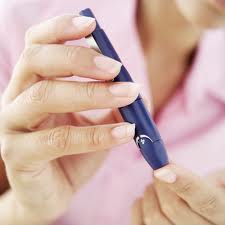Uropathogens from diabetic patients with asymptomatic bacteriuria and Urinary tract infections
Keywords:
Bacteriuria, UTIs, Diabetes, Uropathogens, Antibiotic, SusceptibilityAbstract
Urinary tract infections occur more frequently in diabetic than in non-diabetic patients and have been proven to be the primary cause of renal failure in diabetics. This study was to investigate the prevalence of asymptomatic bacteriuria (ASB) and urinary tract infections (UTIs) in clinically diagnosed patients with diabetes and to determine the uropathogens responsible for ASB and UTIs as well as their antimicrobial susceptibility pattern. One hundred and twenty five diabetic patients comprising 69 (55.2%) females and 56 (44.8%) males attending the Buea and Limbe Regional Hospital Diabetic Clinics, South West Region, Cameroon were studied. Midstream urine samples were collected from the study participants. The midstream urine samples were examined macroscopically, microscopically, and culturally using standard techniques on different agar cultures. Uropathogens isolated included E. coli, Staphylococcus aureus, Streptococcus pyogenes, Klebsiella pneumoniae, Enterococcus faecalis, Proteus mirabilis, Pseudomonas aeruginosa and fungal isolates. Isolates were tested against commonly used antibiotics and antifungals. Asymptomatic bacteriuria had a prevalence of 47.2% and urinary tract infections (UTIs) a prevalence of 34.4%. Isolates showed high resistance to ciprofloxacin (61.3%), ceftriaxone (70.1%), amoxicillin (96.2%), nystatin (72.3%) and ketoconazole (51.8%). We came to the conclusion that a high prevalence of asymptomatic bacteriuria and UTIs was observed in both male and female diabetic patients in Cameroon. Improvement on management of diabetes mellitus and personal hygiene, as well as the appropriate use of duly prescribed antibiotic/antifungals would reduce prevalence of ASB and UTIs and hence prevent renal complications.
References
Adeyeba,O.A., Adesiji,Y.O., Omosigho, P.O., 2007. Bacterial urinary tract infections in patients with diabetes
mellitus. Inter. J. Trop. Med. 2, 89-92
Alebiosu, C.O., Osinupebi, O.A., Olajubu, F.A., 2003. Significant asymptomatic bacteriuria among Nigerian type 2
diabetes. J. Nation. Med. Associ. 95 (5), 344-348.
Andriole,V.T., 2002. Assymptomatic bacteriuria in patients with diabetes, enemy of innocent visitor? New England
J. Med. 347, 1617-1618.
Assel, M.T., Al-Meer, F.M., Al-Kuwari, M.G., Ismali,M. F., 2009. Prevalence and predictor of asymptomatic
bacteriuria among pregnant women attending Primary health care in Qatar. J. Famil. Med. 4, 14-17.
Baqai, R., Aziz, M., Rasool, G., 2008. Urinary tract infections in diabetic patients and biofilm formation of
uropathogens. Infec. Dis. J. Pakistan 17(1), 21-24.
Boroumand, M.A., Sam, L., Abassi,S. H., Salarifar, M., Kassanian, E., Forghani, S., 2006. Asymptomatic bacteriuria
in type 2 Iranian diabetic women; A cross sectional study. BMC Womens Health 6, 4.
Geerling, S.E., Stolk, R.P., Camps, M.J., Netten, P.M., Hoekstra J.B., Bouter, K. P., Braven-boer, B., Collet, J.T., Jansz,
A.R., Hoepelman, A.I., 2000. Asymptomatic bacteriuria may be considered a complication in women with
diabetes: Diabetes Mellitus women asymptomatic bacteriuria Utrecht study group. Diabetes Care. 23, 744-
Hajeri,A., 2008. When to treat asymptomatic bacteriuria. Bahrain Med. Bull. 30(2), 1-4.
Hansen, D.S., Gottschau, A. and Kolmos, H.J. 1998. Epidemiology of Klebsiella bacteraemia: a case control study
using E. coli bacteraemia as Control. J. Hospit. Infec. 38, 119-132.
Harding, G.K., Zhanel, G.G., Nicolle, L.E., Cheang, M., 2002. Antimicrobial treatment in diabetic women with
asymptomatic bacteriuria. New England J. Med. 347, 1576-83.
Olaitan, J.O., 2006. Asymptomatic bacteriuria in female student population of a Nigerian University. Inter. J. Micro.
(2), 4-9.
Ophori, E.A., Imade, P., Johnny, E.J., 2010. Asymptomatic bacteriuria in patients with type-2 diabetes mellitus. J.
Bacterio. Res. 2 (2), 14-17.
Stapleton, A., 2002. Urinary tract infections in patients with diabetes. American Journal of Medicine 113 (1A), 80S-
S.
World Health Organisation (WHO), 2011. Non communicable disease (NCD) country profile. Cameroon.
http://www.who.int/nmh/countries/cmr_en.pdf. Accessed at 8:14, 24/11/2012.

Published
How to Cite
Issue
Section
Copyright (c) 2012 A. L. Njunda, N.J. C. Assob, S. D. Nsagha, F. P. Nde, F.H. L. Kamga, A. F. Nkume, T. E. Kwenti, A. F. Nkume

This work is licensed under a Creative Commons Attribution-NonCommercial-NoDerivatives 4.0 International License.



